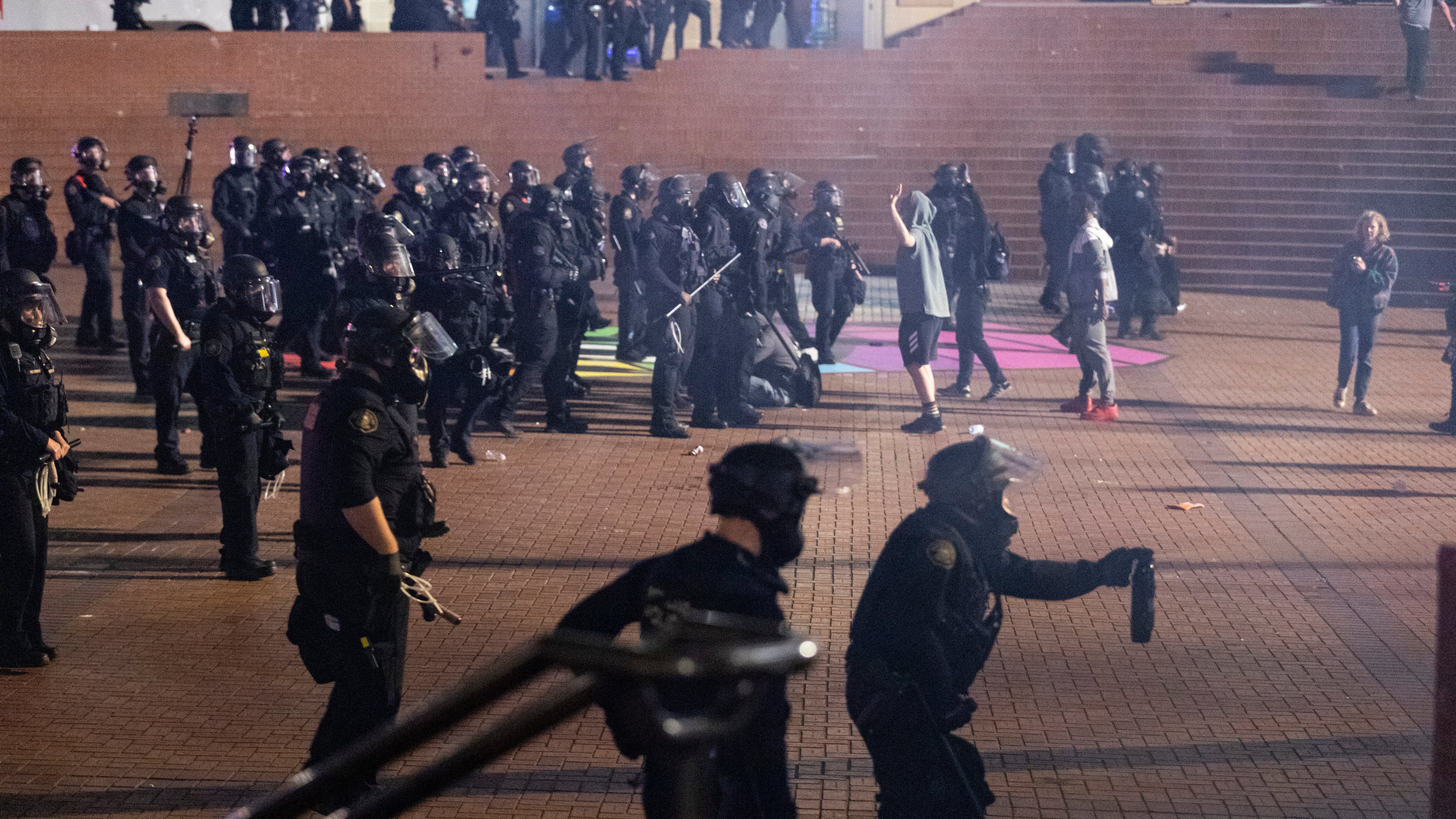The Multnomah County District Attorney’s Office declined to prosecute a Portland police officer for his use of force against Portland journalist Donovan Farley during a June 2020 protest, WW has learned.
The prosecution declination memo, obtained by WW and first reported by the Portland Tribune, says the Portland Police Bureau conducted an investigation into the incident, in which Officer Cameron Smith allegedly struck and pepper-sprayed Farley, at the request of former District Attorney Rod Underhill.
Last summer, Farley penned a first-person account of the incident in WW saying he was pepper-sprayed while filming an arrest. Video from the June 6 incident shows an officer hit Farley with a baton twice and pepper-spray him in the face.
From the @KATUNews feed about 15 minutes ago. This guy gets maced and beaten for filming at the Justice Center #PortlandProtests #PortlandProtest #pdx #portland pic.twitter.com/hGSosEES0m
— TVAyyyy ✶ ✶ ✶ ✶ (@TVAyyyy) June 7, 2020
The decision not to prosecute Smith came as the DA’s office considered several incidents at protests as cases to take to grand juries for possible indictment. Prosecutors have sought an indictment for one officer, referred a second case to the Oregon Department of Justice, and are considering several other cases.
In its close-out memo, dated October 2020, prosecutors called Farley’s written account of the incident “demonstrably inaccurate” when compared to video filmed by a PPB criminalist named Jason Mills. The memo says Mills’ footage showed Farley standing within a few feet of Smith, who was wearing riot gear.
“Mr. Farley appears to be challenging Officer Smith to a fight,” the close-out memo says. “Officer Smith strikes Mr. Farley in the leg with his baton after which Mr. Farley says, ‘Take that shit off, motherfucker! Take that shit off!’”
The memo goes on to say that Smith then sprayed Farley with pepper spray, causing Farley to turn around and walk away. It goes on to claim that PPB determined Smith’s use of force was necessary because the officer was “attempting to arrest Mr. Farley who had just tried to punch him.”
According to the memo, PPB Detective Christopher Traynor attempted to located Farley to discuss the incident, but that he was unable to track down a working telephone number to reach the journalist. The memo says the detective located Farley’s address and sent him a “certified letter” asking Farley to discuss the incident, but that Farley did not respond.
“Detective Traynor knows that Mr. Farley is aware of his attempt at contact because Mr. Farley made comments on social media indicating that he was aware that the police were attempting to contact him,” the memo says. “To date, Mr. Farley has not responded to Detective Traynor, and there is nothing to indicate that he has made contact with any law enforcement agency regarding the incident. Based on the inconsistencies between Mr. Farley’s written account of what transpired and the video recordings available for review, the state is unable to conclude that a crime was committed.”
It’s common for the Police Bureau to investigate allegations of excessive use of force by its own officers, a practice that has received renewed scrutiny and criticism in recent weeks.
The Portland Tribune reported that Farley is planning to file a lawsuit stemming from the incident. “It’s totally and unequivocally false that I would try to fight a police officer,” he told the Tribune. “The guy was abdicating his duty and trying to prevent me from doing my job.”
Update, 3;45 pm Sunday, July 11:
In a statement provided to WW, Farley’s attorney, Jane Moisan, says that prosecutors disparaged his account without explaining what was wrong with it.
“It is rare that someone can recount an event during which they felt their physical safety is under threat in perfect detail,” Moisan says. “People rarely quote themselves or others from memory with complete accuracy. There may have been inaccuracies in Mr. Farley’s statement. He wrote it in the middle of the night just hours after the incident while in immense pain—the spray was so bad he looked like he had been beaten about the head.
“But what portions of his statement were shown to be inaccurate? The location? The time? The exact sequence of movements? The exact distance he was sprayed at? We aren’t given that information from this memo. The video is extremely clear that Officer Smith used force when Mr. Farley posed no threat to anyone,” Moisan says.
Moisan and Farley say that Smith, the officer, targeted him not because Farley was challenging the officer to a fight, but because he was filming four other cops holding an arrestee in “a prolonged chokehold and kneeling on the individual in the same manner that killed George Floyd.”
Farley and his attorney argue that the DA only examined the initial use of force by Smith against Farley, and omitted Smith pursuing Farley down the street and twice pepper-spraying him.
“The memo does not specifically evaluate the force deployed as Officer Smith decided not to let Mr. Farley leave the area, but to instead track him, to close the distance between them not once but twice,” Moisan writes. “As Officer Smith tracked Mr. Farley as Mr. Farley retreated, it is clear as day from the video that there was no attempt whatsoever, in any way, in any universe, to effect an arrest. The force was used to prove a point not to make an arrest.”
Farley and his lawyer say his account is supported by video from KATU-TV that shows Smith pursuing and pepper-spraying them. They challenged the Multnomah County DA to produce any video that contradicts Farley’s account.
“When the public is reviewing details of why the DA declined to prosecute a law enforcement officer,” Moisan concludes, “it needs to be understood that a district attorney relies on law enforcement in the prosecution of its cases and has a very specific relationship to law enforcement.”
